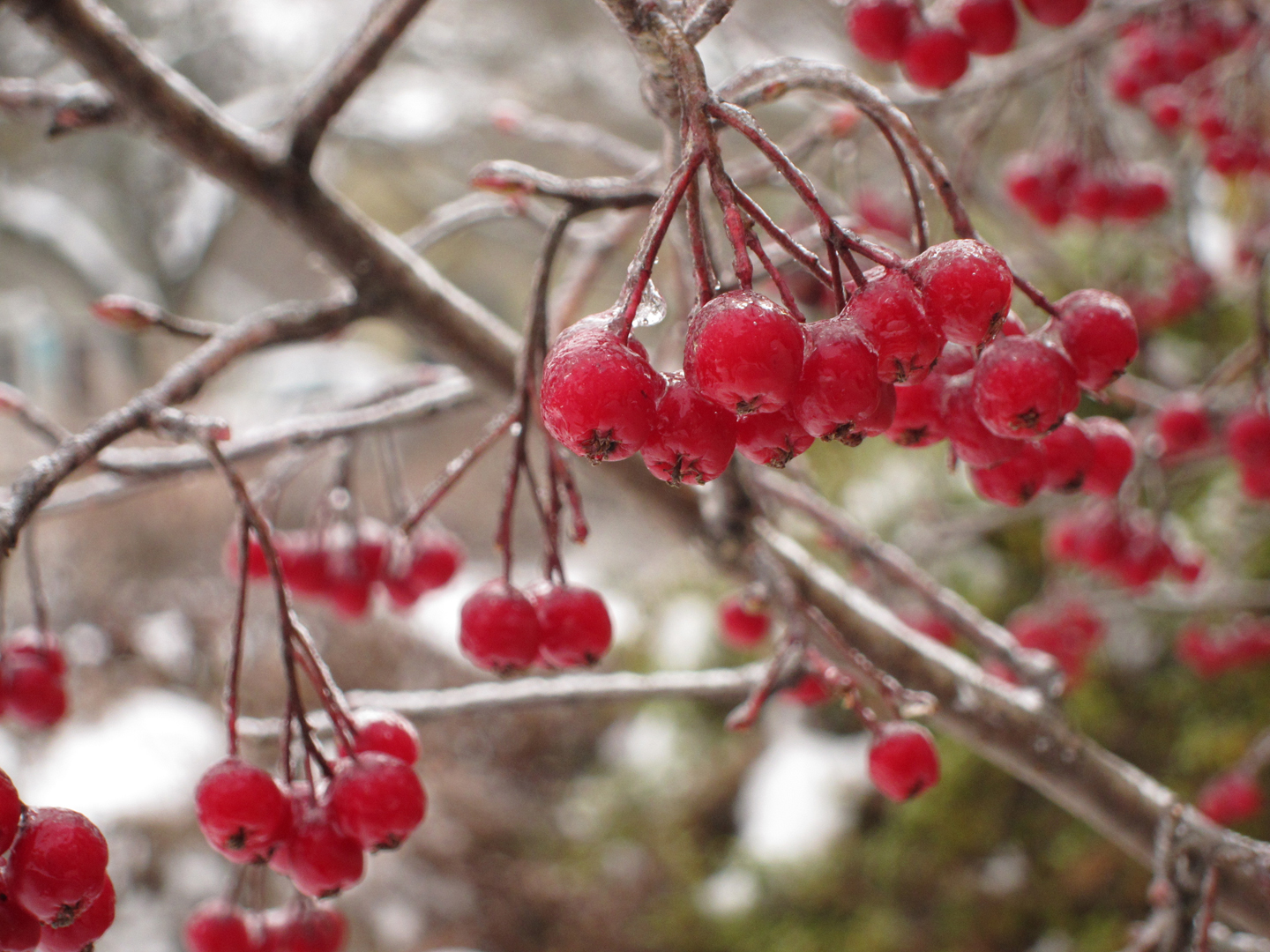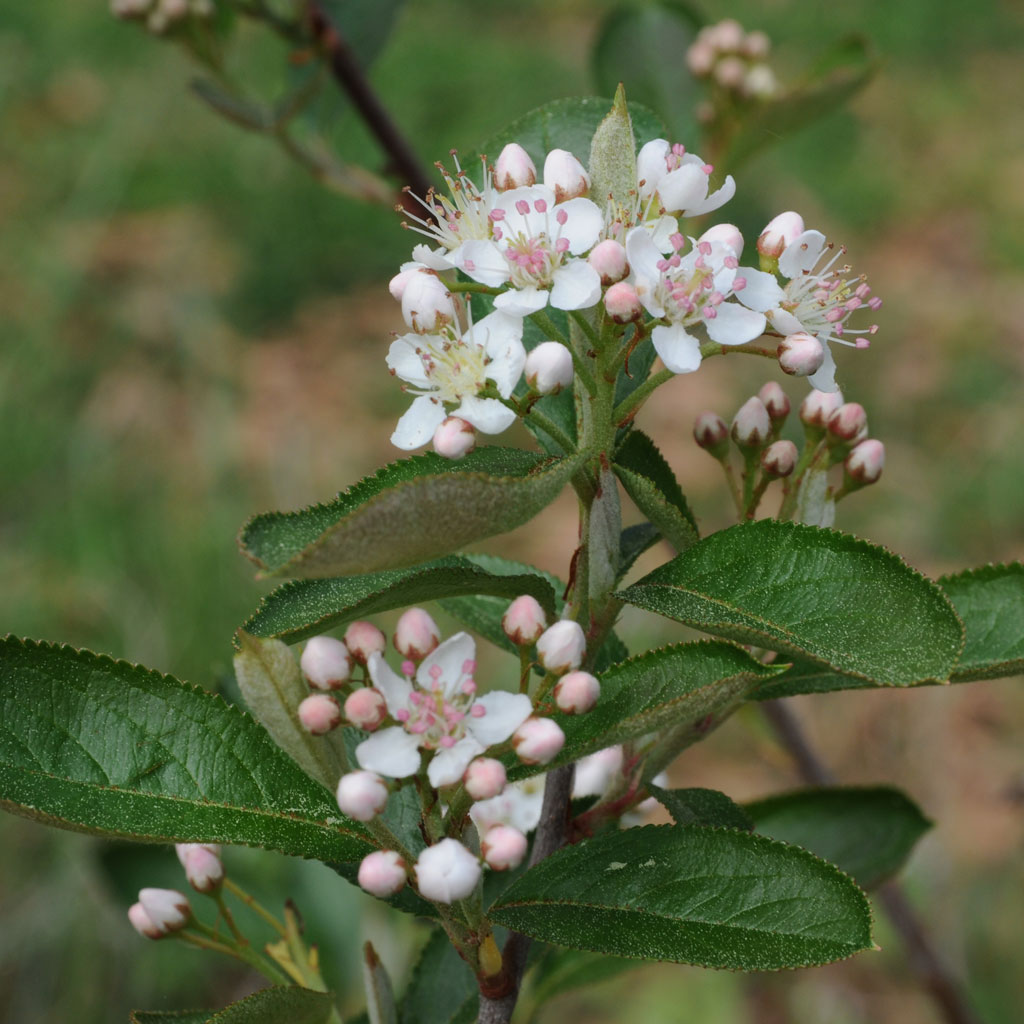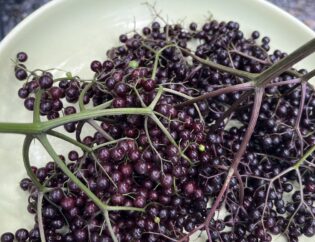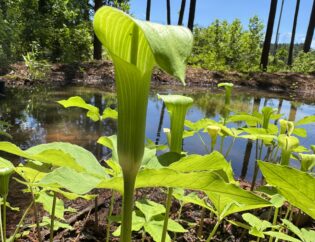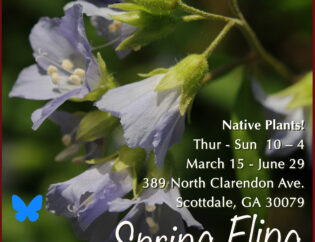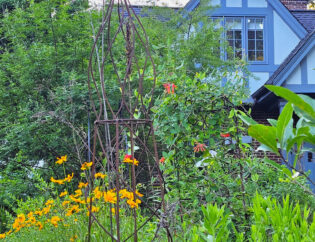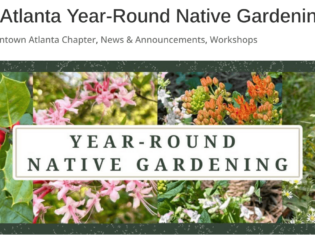
Fall & Winter Berries for Birds!
Pink flowers of Beauty Berry, Callicarpa americana, ring around the stem at the leaf axils. A member of the Mint family, the flowers become plump clusters of florescent mauve berries ripen in early fall.
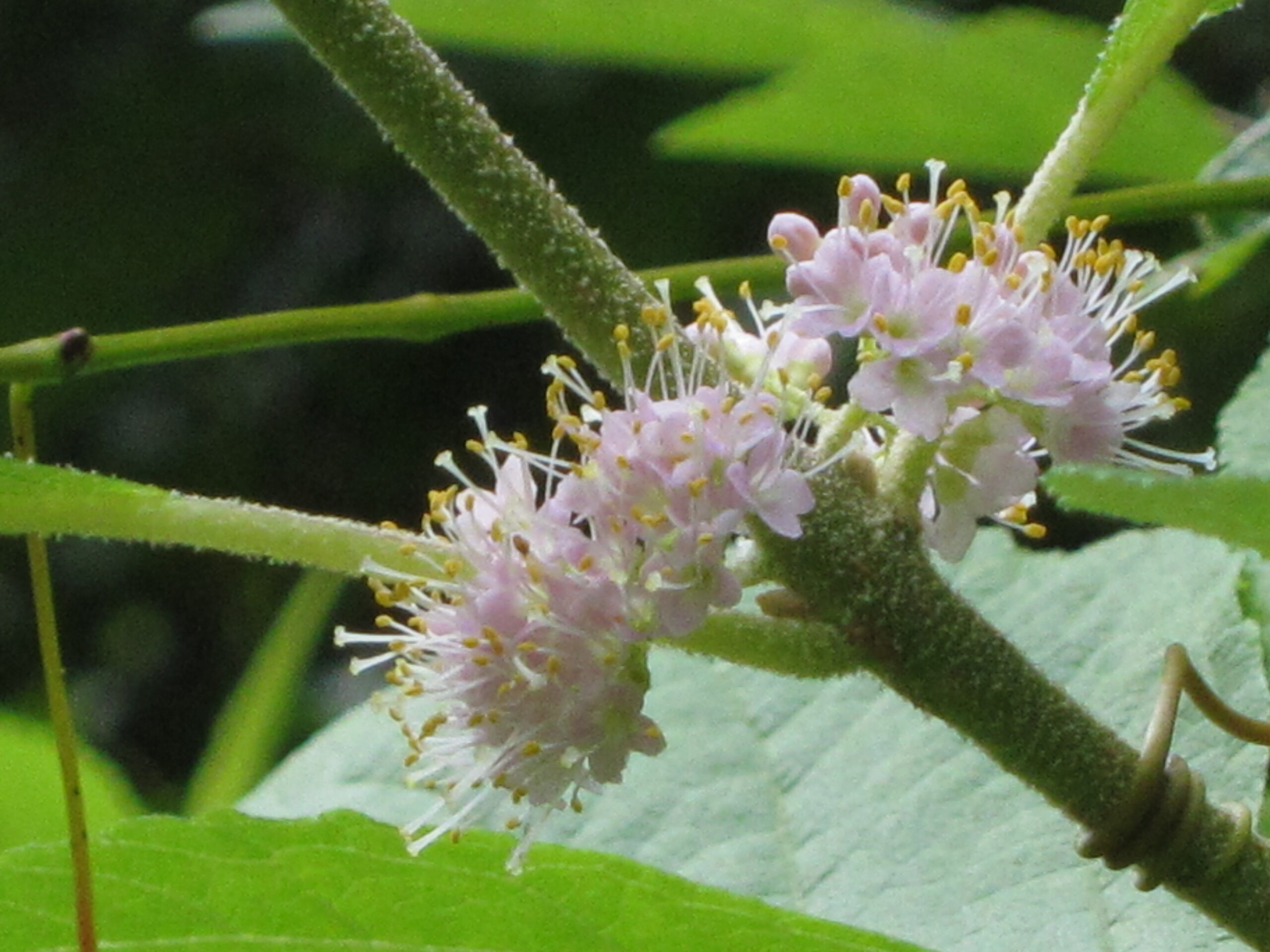

Heart's-a-Busting, Euonymous americanus, has teensy flowers that are pollinated by ants and small beetles. The very small and inconspicuous flowers of Euonymous americanus offer a nectar that attracts ants. Ant-attracting nectars provide fats, linoleic and oleic acids, and amino acids. Ants cannot produce linoleic acid, but their larvae require this nutrient for development.
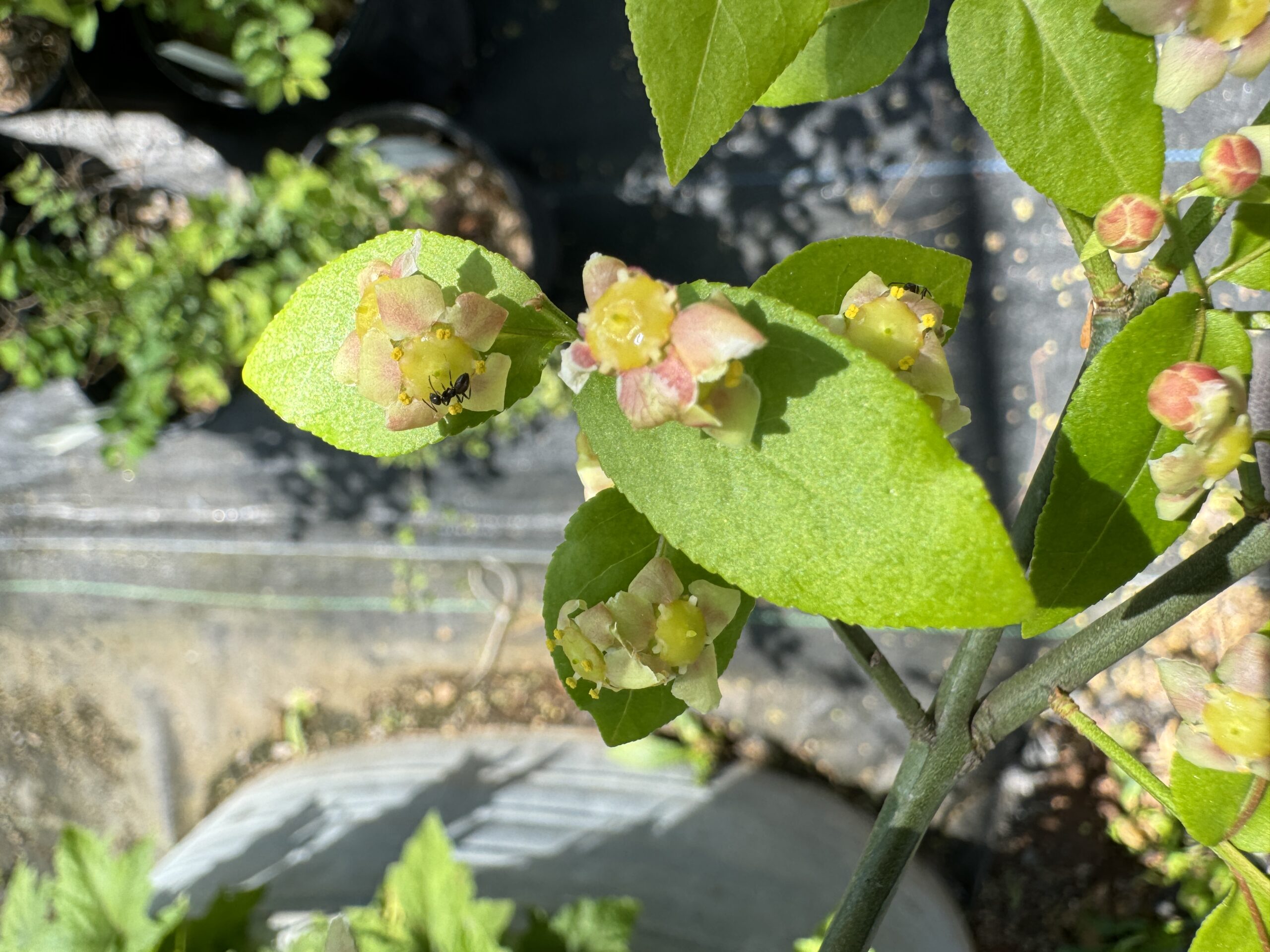

But the fruit of Heart's a Busting is both beautiful and bizarre. Brilliant and warty magenta capsules crack open when ripe to dangle five deep orange berries. It's very eye catching, and kind of weird looking. The berries quiver and dance with every breeze and gust, no doubt intending to catch the attention of local birds.
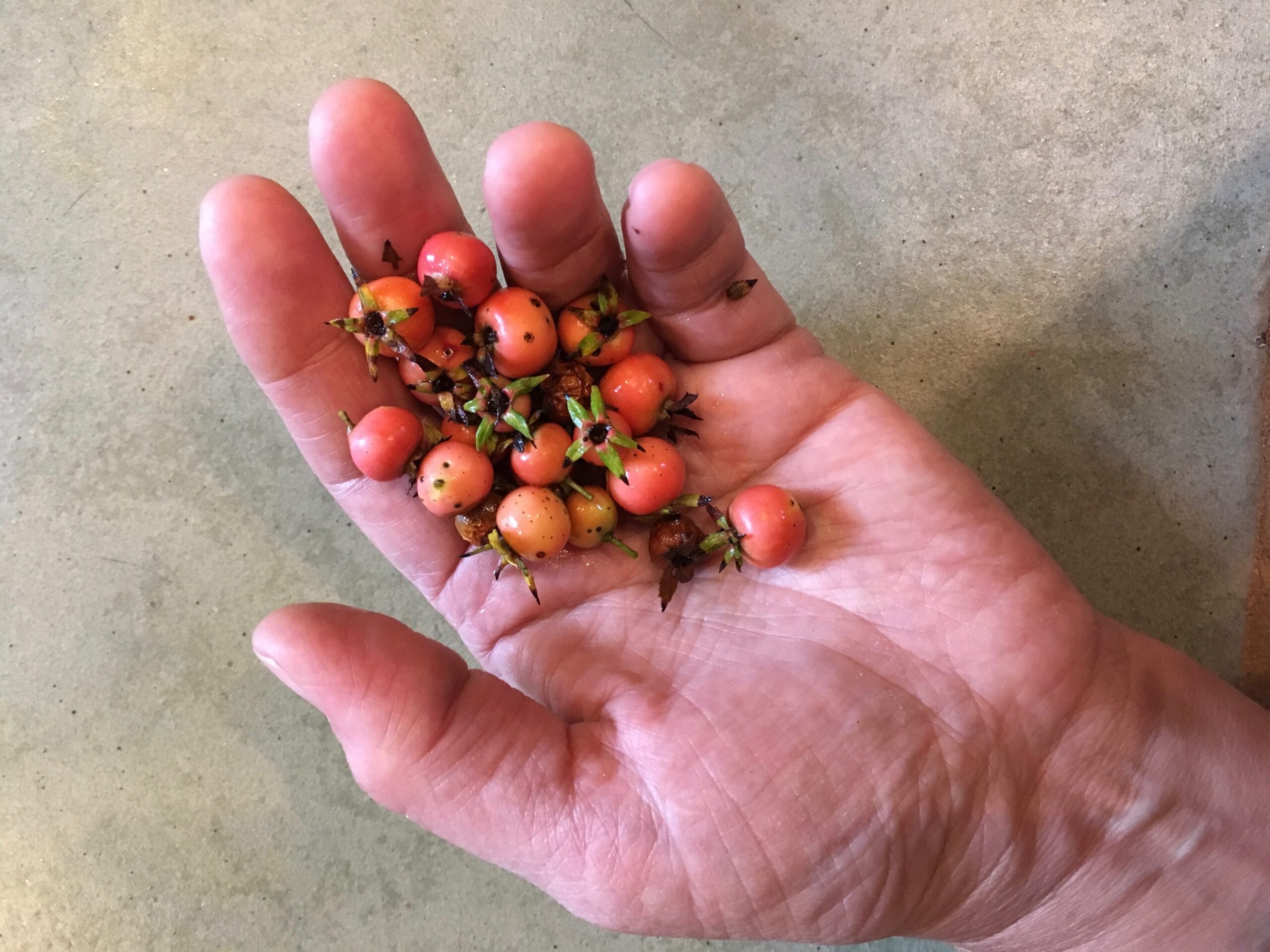
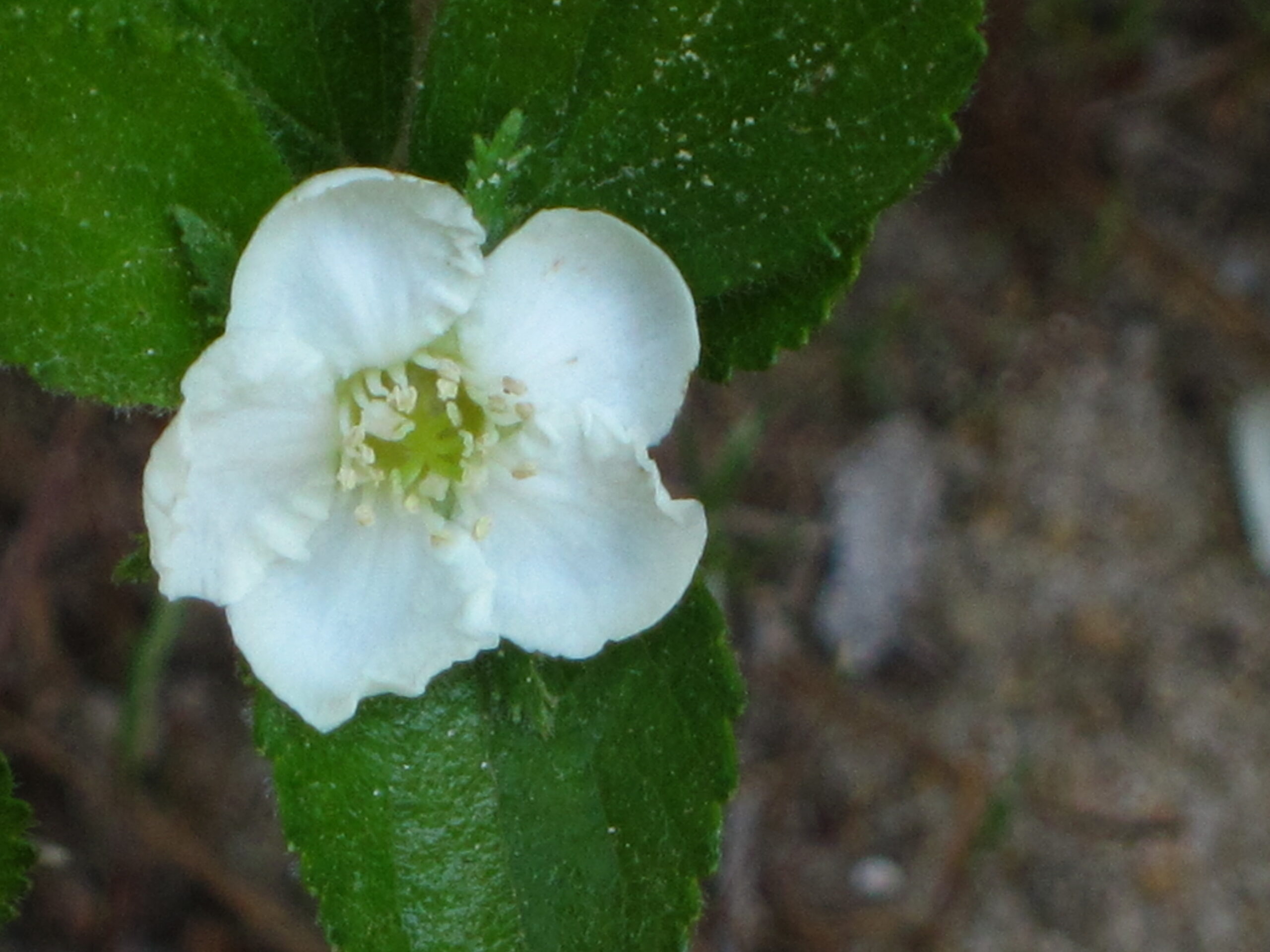
Ripening now, the pomes from Dwarf Hawthorn, Crataegus uniflora, are edible for both birds & people. Hawthorns are members of the Rose family, and the fruits are structurally similar to apples and rose hips. Peachy colored Dwarf Hawthorn pomes, are about the diameter of a nickle; when ripe, these little fruits have the fragrance of a golden delicious apple. On the right, the singular, white, five petaled flower of the Dwarf Hawthorn. These shrubs are drought tolerant and slow growing, topping out at about 5 to 6 feet after several years.


The berries of Parsley Leaf Hawthorn, Crataegus marshallii, & Red Chokeberry, Aronia arbutiflolia, are both winter persistent, making important winter forage resources for winter resident birds and other wildlife. Above on the left, red winter fruits of Parsley Leaf Hawthorn clustered on gray branches, against a blue winter sky. To the right, clusters of white petaled Hawthorn flowers blooming in the spring.
Below, Red Chokeberries, Aronia arbutifolia, in winter, cased in ice from an ice storm. The plentiful fruit will be available to wildlife through the cold winter months. Red Chokeberry produces abundant clusters of white and pink flowers in early spring.
